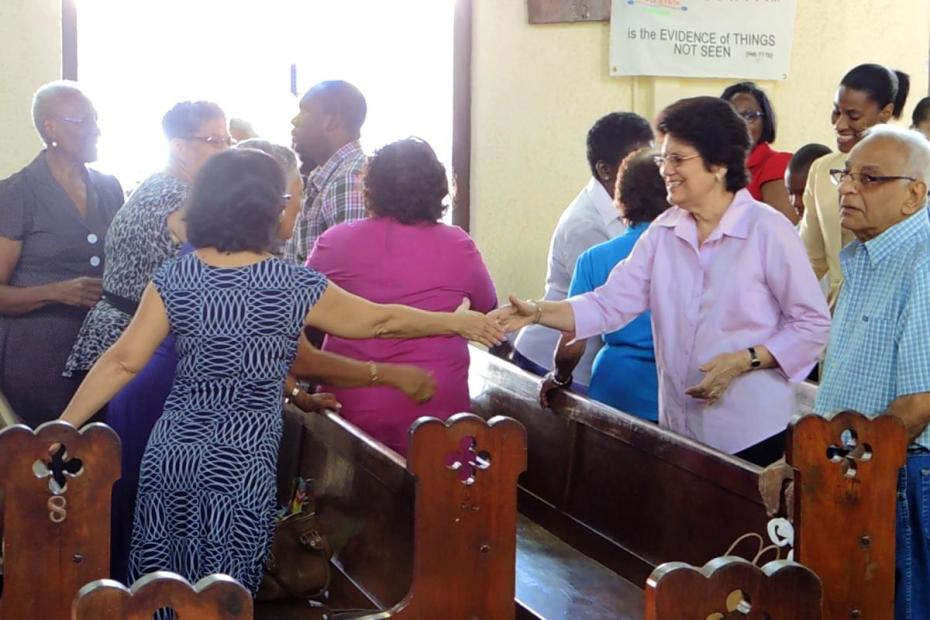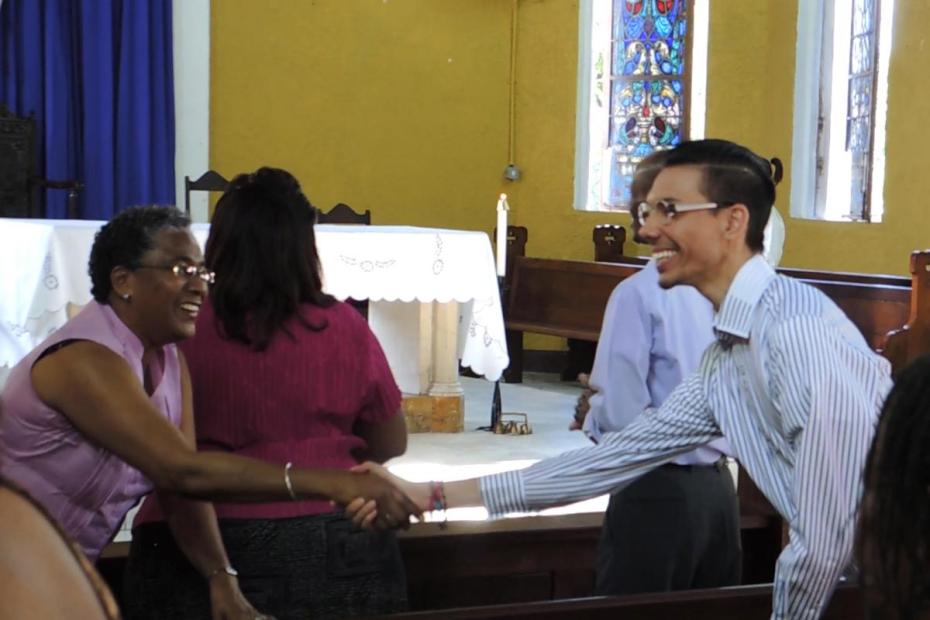Jamaica and Jamaican Catholicism are shaped by migration in a great many ways. The vast majority of Jamaicans are of West African heritage, brought as slaves, but successive waves of immigrants came from Ireland, Germany, India, and China in the 19th century under different forms of indenture. Lebanese migrants followed as merchants. The Irish and Germans were Catholic when they came; Chinese became Catholics in large numbers, and Indians to a slightly lesser extent; Lebanese were Catholic or often became Catholic. To see the faces and the surnames of Jamaican Catholics—and indeed many Jamaicans—is to see the legacy of this migration.
Migration to Jamaica has all but stopped. Less than 1% of the population is foreign born, though one does come across a somewhat disproportionate number of foreign born persons in Catholic churches.1 Significant outward migration to Great Britain began in the 1950s. During the political troubles of the 1970s, migration greatly expanded, especially to the United States and Canada, and continued after that at a slightly more modest pace.2
Outward migration has declined following the 2008 global economic crisis, but since 2001 just over 200,000 people have migrated, out of a population of about 2.7 million people in 2012. That compares to a total of 218,000 Jamaicans who died on the island in the same period.3 In interviews for Catholics & Cultures, almost all young people talked about migration as a distinct possibility or even a likely occurrence for them eventually. Many migrants return to Jamaica, but the departure of so many people and their economic and cultural experience in the U.S. and Canada leave a mark on Jamaican society.
Based on interviews with Jamaican lay Catholics, migration has affected Jamaicans in several ways. First, it has had the effect of disproportionately skimming off the most talented and skilled workers, since these are the persons who often qualify for visas. Second, while all Jamaicans are fiercely proud of their identity, some who had lived abroad expressed greater confusion about what it really means to be Jamaican, aside from patois, food and music. They suggested that their peers are simultaneously attracted to North American culture and fearful of losing their identity to it. Third, families have inevitably become more fragmented, even as they strive to connect to one another and offer support via remittances.
Migration seems to have affected Jamaican Catholicism in these same ways. While there seems to be no firm data on it, there is a good deal of anecdotal evidence that in much of the last century, Kingston Catholics were more likely to be of mixed or non-African ancestry than Jamaicans at large. Their attachment to Afro-Jamaican culture was likely looser, an attachment that was supported by the many Jesuit missionaries who, while dedicated to their work in Jamaica, were also often rather Euro-American in outlook, and who communicated that to their parishioners. A number of interviewees for this project (including one young man born in Nigeria) expressed some sense of disconnect from many aspects of Afro-Jamaican culture. Some of this is social class, but some of it is ethnic identity, and it probably limits the Church’s ability to adapt fully to Afro-Jamaican culture.
Outward migration explains some of the decline in Catholic Church identification.4 Catholics regularly talk of how many friends from their churches have moved to the U.S. or Canada in recent years.
- 1Statistical Institute of Jamaica, “Total Local and Foreign Born Population by Parish of Residence,” Population and Housing Census 2011, last updated June 6, 2014, http://statinja.gov.jm/Census/PopCensus/Totallocalandforeignbornpopulationbyparishofresidence.aspx.
- 2See table 1: Alex Glennie and Laura Chappell, "Jamaica: From Diverse Beginning to Diaspora in the Developed World," Migration Policy Institute, June 16, 2010, http://www.migrationinformation.org/Profiles/display.cfm?ID=787.
- 3Statistical Institute of Jamaica, “Births, Deaths and Migration, 2002-2013” last updated June 6, 2014, http://statinja.gov.jm/Demo_SocialStats/birthdeathmarriage.aspx
- 4Here I rely on my own experience, having lived in Jamaica as a Jesuit some 25 years ago, and conversations with older Jesuits. A glance at records and photos from leading Catholic secondary schools before 1970 also shows a much less African student body.


